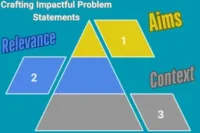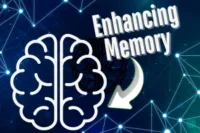How to Craft Impactful Problem Statements for Case Studies
Published: 18/10/2025
“If I had an hour to solve a problem, I’d spend 55 minutes defining it and 5 minutes solving it.”Albert Einstein
This powerful quote from Einstein highlights the importance of a well-defined problem before rushing to a solution. It’s particularly relevant in case studies, where the problem statement serves as the foundation for analysis, solutions, and recommendations. Without a clear, focused problem, even the best solutions can fall short.
For students and analysts alike, defining a clear and impactful problem statement is often a challenging hurdle. Whether for academic research or corporate case studies, vague or poorly constructed problem statements often lead to unfocused analysis, weak proposals, and ultimately missed opportunities for success.
This struggle is widespread—MBA students face the daunting task of ensuring their thesis resonates with professors, while analysts and consultants aim to create compelling, data-backed solutions for clients. Unfortunately, many fall into the trap of writing generic problem statements that lack depth or actionable clarity.
This guide provides a step-by-step approach to crafting a precise, actionable problem statement. You’ll gain access to diverse samples across industries, problem-solving frameworks like the 5 Whys and Minto Pyramid Principle, and visual aids to ensure clarity. These resources go beyond generic advice, offering a structured methodology to transform your problem statements into powerful, solution-oriented narratives. |
For MBA students, this guide will help you secure better grades by refining your thesis proposals into compelling, focused case studies. For analysts and consultants, mastering the art of problem statements will empower you to create more persuasive, results-driven proposals that engage clients and drive results.
Let me share a quick anecdote from a past student of mine, who was unfortunately rejected for their thesis due to a vague problem statement. The student had struggled to pinpoint the core issue, which resulted in a lack of direction for their entire project. With clearer problem definition, they were able to revisit their thesis and ultimately turn it into a successful proposal. It’s clear that defining the problem well can make all the difference—whether you’re aiming for top grades or a successful client proposal.
What Is a Problem Statement and Why Is It Critical?
A problem statement is a concise summary of an issue that requires resolution. It serves as the foundation for the entire case study or analysis, acting as a roadmap that guides the investigation and eventual solution. Without a clearly defined problem, the analysis can become unfocused, and the resulting solutions may not address the core issue effectively.
The problem statement is made up of three essential components:
Context (What’s Known):
- This refers to the background or the current situation surrounding the problem. What do we already understand about the issue? What information is available that can help define the scope of the problem? In a case study, this part establishes the setting in which the problem exists, providing necessary details to understand the issue at hand.
Relevance (Why It Matters):
- Here, the importance of solving the problem is outlined. Why is this issue significant? Who will it impact, and what consequences are at stake? In case studies, this helps ensure that the analysis aligns with organizational goals, research objectives, or societal needs. The relevance ties the problem to tangible outcomes, whether academic, operational, or financial.
Aims (What’s to Be Done):
- The aims outline the goal of the case study or research—what needs to be achieved to resolve the issue? This component drives the focus of the analysis, providing a clear direction for the research and subsequent solution. It lays out the expected outcomes and provides a measurable benchmark for success.
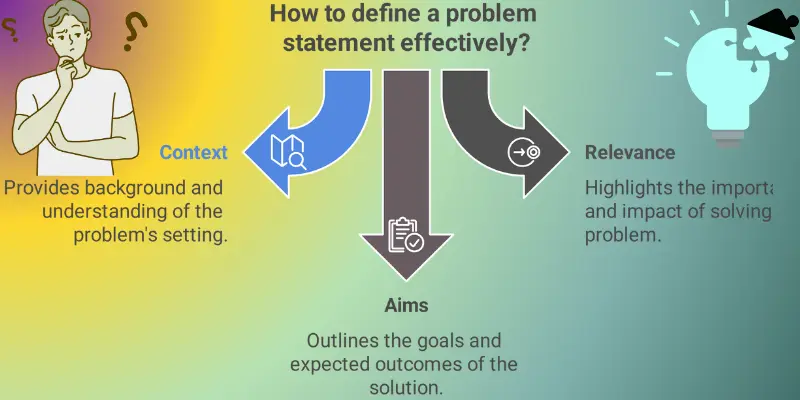
By defining these core components, the problem statement becomes more than just a description; it sets the stage for targeted research, stakeholder alignment, and actionable solutions.
For additional credibility, the McKinsey Seven-Step Problem-Solving Process can be referenced here. McKinsey consultants emphasize the importance of a clear problem definition in their structured approach, which guides the analysis and ensures that efforts are focused on addressing the right issues. This approach is widely regarded as a best practice in corporate problem-solving and reinforces the value of a well-crafted problem statement.
Importance in Case Studies
A problem statement is not just a formal exercise in academic or business writing; it plays a critical role in the effectiveness of case studies. Here’s why:
Aligns Stakeholders:
- In any case study, especially in corporate settings, the problem statement ensures that everyone involved—whether academics, project managers, or executives—is aligned on the key issue at hand. It sets the foundation for collaboration, ensuring that all parties understand the problem from the same perspective. A well-defined problem is the first step toward creating consensus on the path forward.
Focuses Research:
- The problem statement serves as the anchor for the research process. It helps narrow down the scope of the study, guiding researchers to focus on relevant data and information that will help address the issue at hand. Without it, research can easily veer off course, wasting time and resources.
Drives Solutions:
- Ultimately, the problem statement drives the direction of the solution. It is not just a descriptive paragraph but a strategic tool that guides the analysis and decision-making process. A clear problem statement helps identify the right solutions, ensuring that they are targeted, efficient, and aligned with the objectives set forth in the Aims section.
Addressing the PAA Question:
One commonly asked question is: “Why is a problem statement important in case studies?”
The answer lies in its role as the cornerstone of any case study. A well-crafted problem statement provides the clarity necessary to focus efforts, drive research, and propose viable solutions. Without it, the study risks wandering aimlessly, ultimately resulting in weak proposals or conclusions.
To support this point, consider data from Harvard Business Review (HBR), which states that 70% of failed projects suffer from a lack of clear problem definition. This statistic highlights the real-world impact of neglecting the importance of a strong problem statement and underscores its role in successful outcomes.
Academic vs. Corporate Problem Statements: Key Differences
Problem statements in academic and corporate settings differ not only in their tone but also in their structure and formality. Understanding these distinctions is crucial for crafting statements that are tailored to the expectations of your audience.
To clarify the differences, here’s a comparative table outlining the structure, tone, and components of academic vs. corporate problem statements:
| Feature | Academic Problem Statement | Corporate Problem Statement |
|---|---|---|
| Length | Multiple paragraphs | 1-2 sentences |
| Tone | Formal, theoretical | Pragmatic, business-jargon-heavy |
| Formality | Integrated into proposals, includes citations | Stand-alone, direct and to the point |
| Purpose | Identify knowledge gaps, theoretical implications | Drive action, solve operational issues |
| Audience | Professors, researchers, academics | Stakeholders, executives, decision-makers |
Scope and Audience Fit
The scope and audience of a problem statement vary greatly between academic and corporate settings. Understanding these differences ensures that your problem statement is appropriately targeted and impactful.
Academic Problem Statements:
Scope:
- Academic problem statements tend to be broad, aiming to address a knowledge gap or theoretical question. They often explore large, complex issues that are of interest to the academic community. For example, a thesis might focus on a broad research question such as, “What are the long-term effects of renewable energy adoption on global economic stability?”
Audience:
- The primary audience for an academic problem statement includes professors, researchers, and peers. These audiences are looking for critical insights that push the boundaries of current knowledge and contribute to the development of the field.
Corporate Problem Statements:
Scope:
- Corporate problem statements are typically narrower and outcome-driven. They focus on specific, immediate issues that need to be addressed, such as operational inefficiencies or market positioning. For example, a consulting proposal might focus on: “Our client’s customer retention rates have dropped by 15% in the last quarter due to poor customer service.”
Audience:
- The target audience for a corporate problem statement includes executives, stakeholders, and other decision-makers within the organization. These individuals are interested in clear, actionable solutions that can be implemented to drive business results.
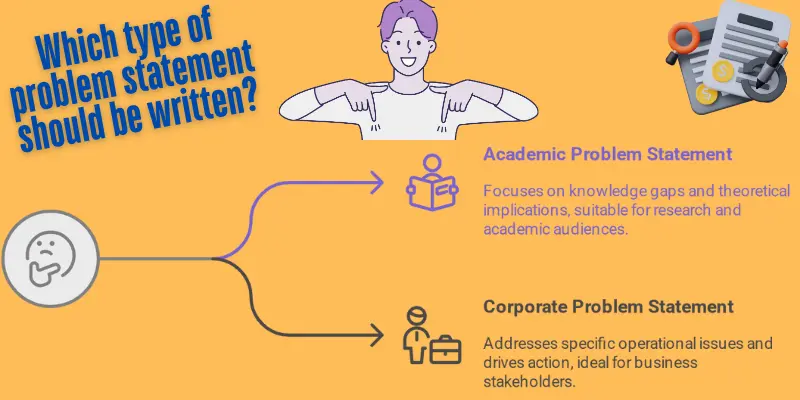
Consider the difference between an MBA thesis problem statement and a consulting proposal. For an MBA thesis, the problem statement might be something like, “Despite growing interest in e-commerce, the impact of customer loyalty programs on sales in the fashion industry remains under-researched, creating a significant gap in existing literature.”
In contrast, a consulting proposal might say, “Our client’s e-commerce sales have plateaued due to lack of customer engagement, and there is a need to develop a targeted loyalty program to boost retention by 10% in the next quarter.”
Leveraging Problem-Solving Frameworks for Stronger Statements
One of the most effective ways to refine a problem statement is by addressing the root cause rather than just the symptoms. This approach is embodied in the 5 Whys technique, a problem-solving tool used to explore the cause-and-effect relationships underlying a particular issue.
How it Works:
The 5 Whys is an iterative questioning technique that asks “Why?” multiple times (typically five) until the root cause is identified. By continuously drilling down into the issue, you uncover the underlying problem that needs to be solved, rather than just addressing superficial symptoms.
Example:
- Initial Statement: “Sales are low.”
- Why? “The marketing campaign isn’t attracting enough customers.”
- Why? “The messaging isn’t resonating with the target audience.”
- Why? “We’re targeting a broad audience rather than a specific niche.”
- Why? “The customer personas were poorly defined.”
- Why? “There was no thorough research into customer needs.”
Root Cause:
- Ineffective targeting due to poorly defined customer personas.
How it Enhances Problem Statements:
- The 5 Whys ensure that problem statements address the root cause and not just the symptoms. In the example above, a problem statement focusing on “low sales” would be insufficient because it doesn’t address the underlying issue. However, once the root cause is identified (ineffective targeting due to poor customer research), the problem statement becomes much more actionable and solution-oriented.
A tech firm might use the 5 Whys to identify inefficiencies in their internal processes. For example, the company could identify a long product development cycle by applying the 5 Whys technique:
Why is product development taking too long?
“Lack of communication between teams.”
Why?
“Teams are not aligned on project goals.”
Why?
“There is no centralized communication system.”
Why?
“The company has not invested in collaborative tools.”
Why?
“The need for improved communication tools was never assessed.”
The root cause, in this case, is a lack of alignment and communication tools, which can then be addressed directly in the problem statement.
Minto Pyramid Principle for Clarity
The Minto Pyramid Principle offers a structured approach to presenting information clearly and logically, ensuring that your problem statement is both concise and comprehensive.
How It Works:
The Minto Pyramid Principle uses a top-down approach, starting with the main issue and then breaking it down into grouped arguments and supporting evidence. This approach is particularly useful for crafting MECE (Mutually Exclusive, Collectively Exhaustive) statements, where each component of the problem is distinct yet covers the entire scope of the issue.
- Main Issue (Top of the Pyramid): The primary challenge or problem being addressed.
- Grouped Arguments (Middle of the Pyramid): Key reasons contributing to the problem.
- Evidence (Base of the Pyramid): Data or facts that support the argument.
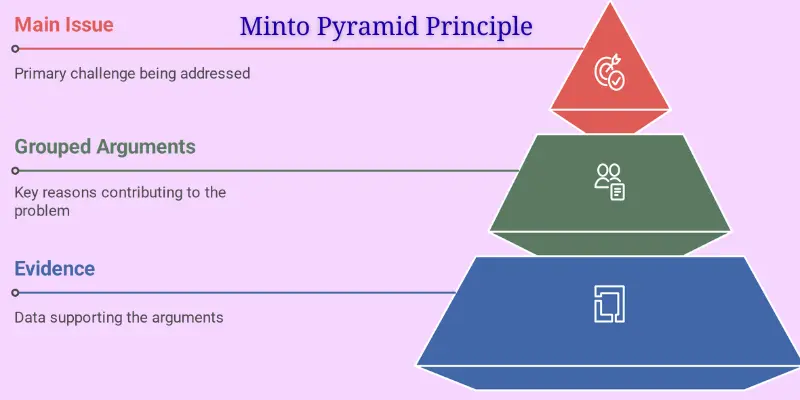
Crafting MECE Statements:
- A well-crafted MECE statement ensures that the problem is fully understood and that each contributing factor is explored without overlap. This structure allows for a clear, concise, and comprehensive problem definition.
Example:
Main Issue:
- “The company’s customer retention rates are declining.”
Grouped Arguments:
- “Customer satisfaction is low.”
- “Customer service is slow and unresponsive.”
- “The loyalty program is ineffective.”
Evidence:
- “Customer satisfaction survey scores dropped by 25% last year.””Customer service response time is 48 hours, exceeding the industry standard.””Loyalty program sign-up rates have dropped by 30% in the last 6 months.”
This structure leads to a well-rounded, comprehensive problem statement that can drive actionable solutions.
Here’s a reworked problem statement for a real-world scenario, applying the Minto Pyramid Principle:
Before:
“Customer service is poor, and customers are leaving.”
After (using Minto Pyramid Principle):
“Customer retention is declining due to poor customer service, ineffective loyalty programs, and slow response times, as evidenced by a 25% drop in satisfaction scores, slow response times exceeding 48 hours, and a 30% decrease in loyalty program engagement.”
Lean Methodologies for Value Focus
In the corporate world, especially in industries focused on efficiency, Lean methodologies are invaluable for framing problems in terms of waste elimination and value creation. This framework focuses on identifying inefficiencies and streamlining processes to achieve optimal results.
How It Works:
Lean focuses on identifying activities that do not add value (waste) and eliminating them to improve overall efficiency. Problems are framed around time or cost inefficiencies, aiming to optimize processes and resources.
Example:
Problem Statement:
“The company’s production cycle is too long, causing delays in product delivery.”
Lean Approach:
- Identify Waste: Unnecessary waiting time between production stages.
- Solution: Implement a Just-in-Time (JIT) production system to reduce waiting time and improve efficiency.
Quantifying Impacts for Validation:
Lean methodologies also emphasize quantifying the impacts of waste reduction to demonstrate the potential benefits. For example, by shortening the production cycle by 30%, the company could see a 15% increase in on-time deliveries and a 20% reduction in operating costs.
For example, a manufacturing firm might apply Lean methodologies to identify inefficiencies in their production process, leading to a problem statement like:
- “The company’s production cycle takes an average of 90 days, with significant delays at multiple stages. This inefficiency leads to an annual cost of $1 million in lost opportunities and missed deadlines.”
After applying Lean techniques, they could reduce the cycle time by 30%, saving $300,000 annually.
Real-World Examples: Sample Problem Statements Across Industries
In academic research, problem statements are essential for identifying gaps in current knowledge and providing a foundation for further investigation. Below are examples of how problem statements can be framed across different fields:
Gig Economy:
Problem Statement:
“The gig economy’s rapid growth lacks insights into workers’ subjective experiences, limiting theoretical understanding of employment flexibility.”
Context:
- The gig economy is expanding rapidly, but there is a significant gap in understanding how workers within this sector experience job flexibility, autonomy, and financial stability.
Relevance:
- This issue is particularly relevant as the gig economy continues to grow, affecting millions of workers globally. Understanding workers’ experiences could influence labor laws, business practices, and academic perspectives on flexible employment.
Aims:
- The aim of the research is to explore subjective experiences of gig economy workers and contribute to a deeper theoretical understanding of employment flexibility.
To support this, a credible source like the Harvard Graduate School of Education could be cited to reinforce the importance of understanding labor market trends and their impact on future workforce policies.
Online Education:
Problem Statement:
“Non-mandatory online sessions face unpredictable attendance, despite evidence of interaction benefits; student perceptions remain understudied.”
Context:
- Many online courses offer non-mandatory sessions, yet attendance is often inconsistent, despite evidence that participation leads to better learning outcomes.
Relevance:
- Understanding student engagement in online education is critical for designing effective, flexible learning systems. This issue is especially pertinent in the context of remote learning trends and evolving educational models.
Aims:
- The research seeks to examine why students don’t attend non-mandatory sessions and explore how their perceptions of the learning environment influence attendance and engagement.
- Referencing studies from Harvard Graduate School of Education could provide credibility to the findings, emphasizing the growing body of research on student engagement in online learning environments.
Corporate Scenarios
Corporate problem statements focus on operational challenges, resource allocation, and improving organizational performance. Here are two examples:
Employee Turnover (Shoe Manufacturer):
Problem Statement:
“A shoe manufacturer faces 18.6% millennial turnover, costing morale and $50K quarterly; cultural factors are overlooked.”
Context:
- The company is facing high turnover rates among millennial employees, which is negatively affecting morale and incurring significant costs.
Relevance:
- Employee turnover directly impacts company culture, productivity, and profitability. Identifying the root causes of turnover can help the company retain top talent and reduce associated costs.
Aims:
- The aim of this analysis is to understand the reasons behind high turnover, particularly focusing on cultural factors that may be contributing to the issue.
Referencing Bain & Company’s Results Delivery® framework could enhance credibility by demonstrating how companies can align their problem-solving processes with strategic business goals, such as improving employee retention.
Nonprofit Fundraising:
Problem Statement:
“200+ nonprofits raise <20% of budgets from donors, risking $10M in foundation funding.”
Context:
- Many nonprofits struggle to secure sufficient funding from individual donors, relying heavily on foundation grants to meet their budgets.
Relevance:
- This problem is crucial for nonprofit sustainability and growth. Without diversified funding sources, nonprofits risk financial instability, jeopardizing their ability to serve their communities effectively.
Aims:
- The goal is to explore why nonprofits are not able to increase donations and how they can develop strategies to improve their fundraising efforts.
Leveraging Bain’s Results Delivery® framework could provide a solid foundation for understanding how nonprofits can better strategize their fundraising efforts to diversify revenue streams.
Tech/Industry Scenario
In the tech industry, problem statements often address inefficiencies in processes, outdated systems, and the need for innovation.
Problem Statement:
“A tech firm’s team spends 20% of time on manual data entry due to outdated tools, delaying releases and costing $50K quarterly.”
Context:
- The tech firm is facing significant inefficiencies due to outdated tools that require team members to spend a disproportionate amount of time on manual data entry. This is leading to delays in product releases and increased operational costs.
Relevance:
- In the fast-paced tech industry, any delays in product releases can result in missed market opportunities, lower customer satisfaction, and increased operational costs. Addressing this inefficiency is crucial for maintaining competitiveness.
Aims:
- The goal is to analyze how outdated tools are affecting team productivity and identify potential solutions to automate processes, thereby reducing time spent on manual tasks.
To strengthen the case, a real-world tech case study, such as an Agile project turnaround, could be referenced. This would highlight how adopting modern tools or methodologies (e.g., automation or Agile frameworks) could help the firm solve this issue efficiently and boost performance.
Best Practices for Crafting Impactful Problem Statements
Crafting an impactful problem statement is crucial for guiding research, aligning teams, and ensuring a solution-oriented focus. Below are the essential principles to keep in mind when developing a problem statement:
Keep It Concise (1-3 Sentences); Focus on One Issue:
A problem statement should be clear and focused, addressing a single issue. Avoid trying to cover too many aspects of a problem in one statement, as this can dilute the message. Aim for brevity and precision, ensuring that the problem is easily understood at a glance.
Example:
Weak Problem Statement:
- “There are many issues with the marketing department, and the sales aren’t doing as well as expected.”
Strong Problem Statement:
- “The marketing department’s campaigns are underperforming, leading to a 15% decrease in quarterly sales.”
Use Data to Quantify:
- Whenever possible, use quantifiable data to support the problem. This not only makes the issue more tangible but also sets a clear benchmark for success. For instance, rather than saying “high turnover,” say “18% turnover,” which gives a specific, measurable target to work with.
Example:
Weak Problem Statement:
- “Employee turnover is a major issue.”
Strong Problem Statement:
- “The company faces 18% annual employee turnover, resulting in a $50K cost per quarter in recruitment and training.”
Collaborate with Stakeholders; Test for Clarity:
- Involve key stakeholders in the problem definition process to ensure that the statement aligns with the organization’s goals and that there’s consensus on the problem. Also, test your problem statement for clarity by asking colleagues or peers to read it and provide feedback.
Common Mistakes to Avoid and Expert Editing Tips
Even after crafting a problem statement, there are common pitfalls that can make it weak or unclear. Here are some mistakes to avoid and how to fix them:
Vagueness:
Avoid broad or vague language that doesn’t clearly define the problem. Be specific with numbers, facts, and details to ensure that the problem is well-understood.
Example:
- Pitfall: “There are issues with sales.”
- Fix: “Sales have declined by 18% over the past quarter due to ineffective targeting.”
Overcomplexity:
Keep the language simple and straightforward. Avoid jargon or technical terms that might confuse non-experts. The goal is clarity and accessibility.
Example:
- Pitfall: “The lack of synergy between cross-functional teams impedes the execution of the overall operational framework.”
- Fix: “Poor communication between teams delays project execution.”
Assuming Solutions:
A problem statement should focus on what and why, not how. Avoid suggesting solutions before fully defining the problem.
Example:
- Pitfall: “Employee turnover will be reduced by increasing compensation.”
- Fix: “Employee turnover has risen by 18% annually, driven by dissatisfaction with current benefits.”
Ignoring Relevance:
A problem statement should clearly explain why solving this issue matters. Link the problem to its potential impact on the organization or project.
Example:
- Pitfall: “The company has a high turnover rate.”
- Fix: “The company’s high turnover rate is leading to increased recruitment costs of $100K annually and decreased morale among remaining staff.”
Broad Scope:
Narrow the focus of the problem statement. If the scope is too wide, it becomes hard to address in a meaningful way.
Example:
- Pitfall: “There are many challenges in the company’s sales department.”
- Fix: “Sales in the Northeast region have dropped by 12%, primarily due to ineffective marketing strategies.”
Refinement Techniques
Even after you’ve written your problem statement, it’s important to refine and validate it. Here are some expert editing techniques:
Iterate Drafts:
- Don’t settle on your first draft. Continuously refine your problem statement, checking for clarity and precision. Each iteration should improve the focus and relevance.
Seek Feedback:
Use Frameworks like the 5 Whys:
- Before finalizing your problem statement, use problem-solving frameworks such as the 5 Whys or the Minto Pyramid Principle to ensure that the problem is well-defined and actionable.
Conclusion
Crafting a strong problem statement is the first step toward a focused, actionable case study. By clearly defining the issue, setting the context, and outlining the aims, you provide a solid foundation for research, solutions, and decision-making. Whether in academic or corporate contexts, a well-written problem statement helps align stakeholders, focus research, and drive solutions.
Key takeaways:
- Problem statements provide clarity and direction.
- They differ by context, with academic statements being broader and theoretical, while corporate statements are concise and actionable.
- Problem-solving frameworks, like the 5 Whys and the Minto Pyramid Principle, offer structured approaches to refining and strengthening problem statements.
- Real-world examples and best practices ensure your problem statement addresses the right issue, without vagueness or complexity.
Now that you have the tools, frameworks, and real-world examples, it’s time to refine your own problem statement. Don’t just leave the theory behind—apply it. Start by reviewing a recent case study or proposal and revise the problem statement to make it clearer and more actionable.
“Remember, the strength of your problem statement determines the strength of your solution. Don’t settle for vague or generalized statements—dare to define the problem with clarity, and the solution will follow. Start shaping the future of your case study today.”
FAQs: Quick Answers to Common Questions
A problem statement clearly defines the issue to be addressed. It highlights the context, relevance, and goals. For example, in the gig economy, a problem statement might be: “The gig economy’s rapid growth lacks insights into workers’ subjective experiences, limiting theoretical understanding of employment flexibility.” This provides the context (gig economy growth), relevance (subjective experiences), and the aim (enhancing theoretical understanding).
To write a strong problem statement:
- Be concise: Limit it to 1-3 sentences, focusing on one issue.
- Use data: Quantify the problem (e.g., “18% turnover”).
- Define context: Explain what is already known.
- State relevance: Why does it matter?
- Outline aims: What needs to be done?
Example: “Employee turnover has increased by 18%, leading to increased recruitment costs and lowered morale.”
A problem statement is critical in case studies because it:
- Aligns stakeholders on the issue.
- Focuses research efforts on relevant data.
- Guides solution development, ensuring targeted, effective responses.
Without a clear problem, the study lacks direction, and solutions may not effectively address the real issue.
Common mistakes in problem statements include:
- Vagueness: Using broad terms like “issues” instead of specifics.
- Overcomplexity: Using jargon that confuses non-experts.
- Assuming solutions: Focusing on “how” instead of “what” and “why.”
- Ignoring relevance: Failing to explain why solving the problem matters.
Fix: Instead of “employee turnover issues,” say “18% turnover rate costing $50K annually.”
In academic settings, problem statements are broad, theoretical, and designed to identify a knowledge gap. Example: “The impact of online learning on student engagement remains underexplored.”
In business, problem statements are concise, pragmatic, and focused on actionable solutions. Example: “Declining sales due to ineffective marketing, causing a 12% revenue drop last quarter.”

- Be Respectful
- Stay Relevant
- Stay Positive
- True Feedback
- Encourage Discussion
- Avoid Spamming
- No Fake News
- Don't Copy-Paste
- No Personal Attacks



- Be Respectful
- Stay Relevant
- Stay Positive
- True Feedback
- Encourage Discussion
- Avoid Spamming
- No Fake News
- Don't Copy-Paste
- No Personal Attacks


